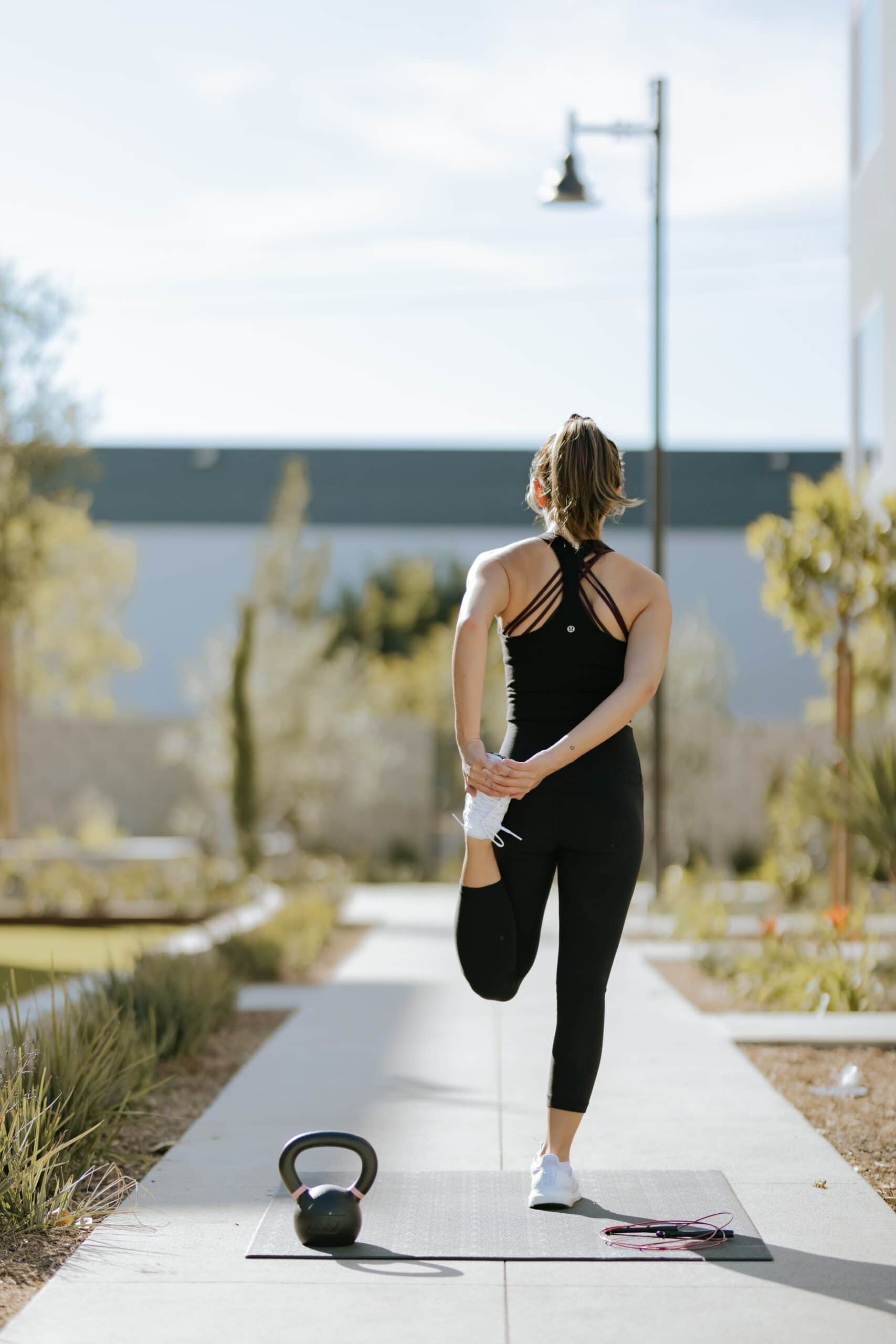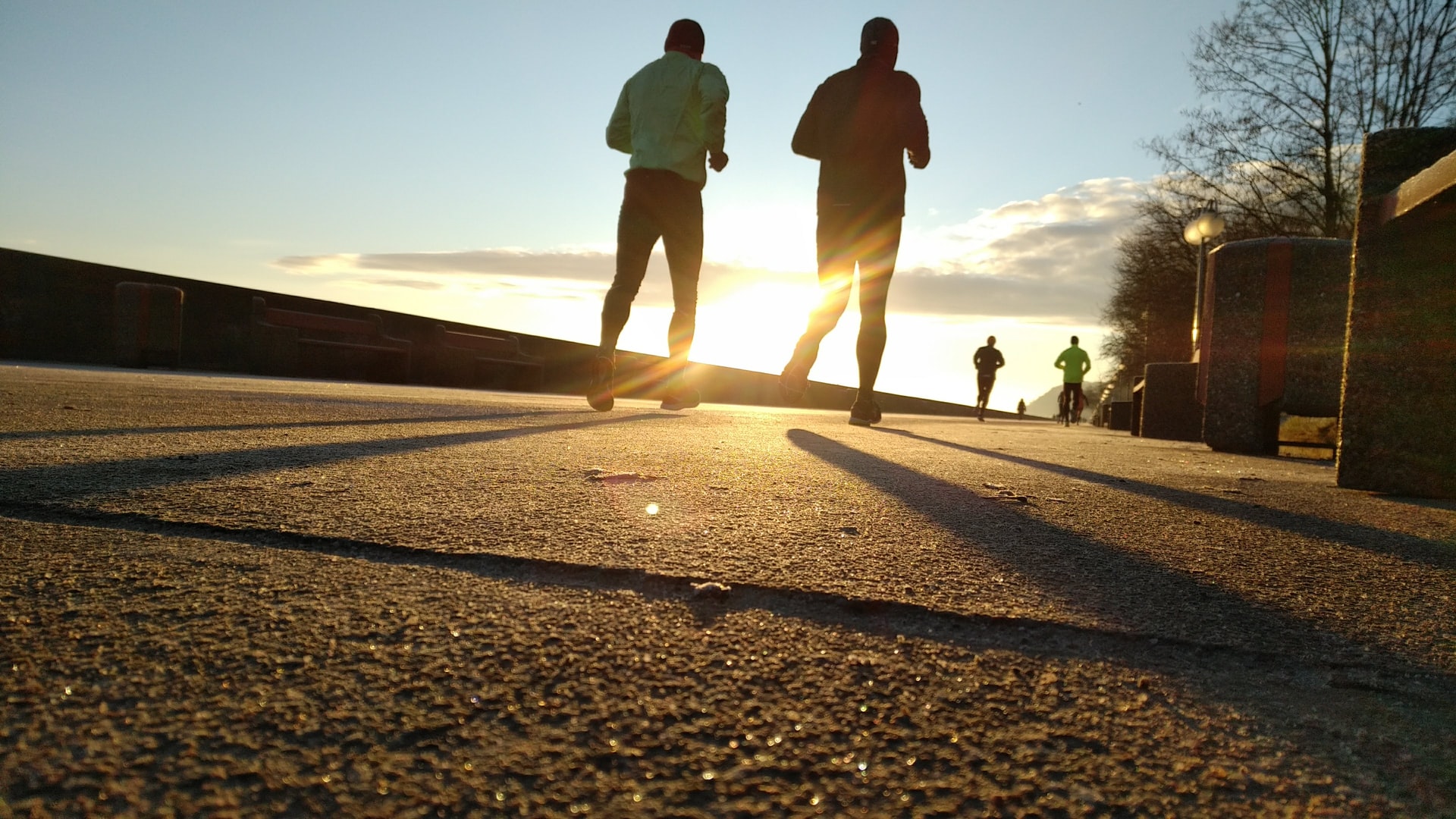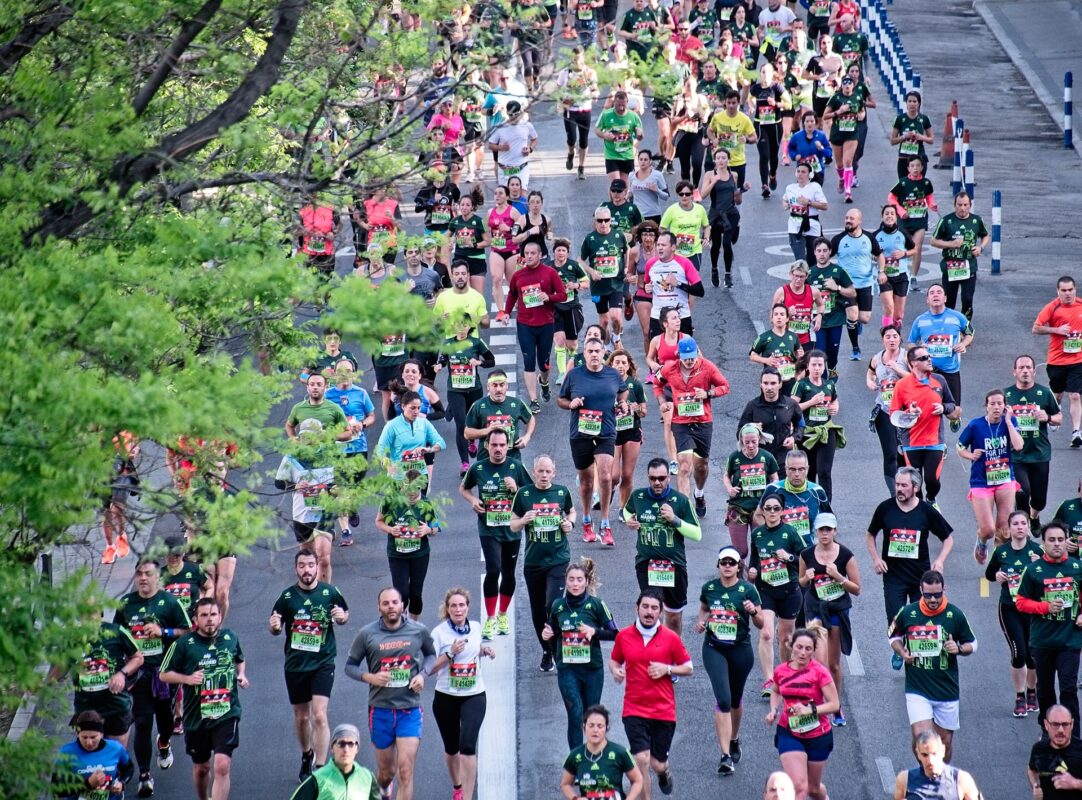
Contents
Am I too old to take up running?
Our ages don’t stay the same forever, and neither does our health. It is essential to adapt to some changes to ensure we stay healthy for the rest of our lives. Old age doesn’t dictate your growth, and it shouldn’t stop you from achieving your dream.
Minoru Saito was a Japanese sailor who set out from Japan in 2011. He sailed around the world for about a year and became the oldest person to complete the journey. He was aged 77 at the time of achievement.
While sailing on a ship might not require extensive physical effort, our following example climbed the tallest mountain in the world at a late age. Yuichiro Muira was always a fond mountain climber; he wished to summit the tallest peaks in the world, but his early life went by fighting against several heart diseases.
At the age of 77, he realized his commitment determines his growth, and he took the biggest challenge of his life- climbing Mount Everest. After more than 30 days, he achieved the feat and became the oldest person to do so. He has still not slowed down. He plans to submit the Himalayan ranges in 2022.





No Age limit For Runners
Both examples showed that a human could achieve whatever they aim. Your consistency and determination determine your growth. It is never too late to adhere to a good habit and give up on a bad one. Generally, our health conditions are better than those of the previous generations.
The improvement in health facilities supported by increased awareness about a healthy diet has helped people live long lives. Recently, we have seen a surge in older runners; it is mainly due to increased motivation to sustain better health and avoid health diseases,
Studies have shown a 30% increase in masters over the last five marathons worldwide. (Masters is used to refer to runners beyond the age of 40) Similarly, it also noticed an increase in masters finishing the marathon ahead of young-aged runners.
It shows that older people are now inclined to sustain a better living and set out for a newer life. Similarly, running programs have also seen an increase in old-aged runners; across the US, running programs recorded an increase of more than 1200 runners amongst 60+ members.
Life is short, and we shouldn’t avoid good things in life. Running is a great habit; it helps you stay fit and running. The right running program can help you improve your heart conditions without falling into injuries.
Regular running will also help you improve your mental health and muscle mass. If running is done as strength training, it will help you improve your cardiovascular health, stabilize your blood pressure and avoid any heart disease in the future.
Are you an old-aged runner looking to begin running? Well, then this blog is for you. We shall take you through a detailed set of guidelines to prevent unwanted consequences from your running habit.
Over the course of the blog, you shall learn better techniques to improve your health through running without overstressing your body. So, whether you are a running veteran or a 60+-year-old looking to start running, let’s put your running shoes on!
How to start running at 60-years?
 The schedule is essential.
The schedule is essential.
As it is said, a dream without a plan is just a wish; once you have a plan, time is the only separator between your goals and the present. Before you begin running, it is vital to identify when it is the right time.
Ideally, sports or physical exercise should be done early in the morning, as your body is ready to take increased strain after rest; it also gives you the time to relax and feel the cool morning breeze.
However, there is no right time to work out; in other words, you can exercise whenever you feel like it. If you’re in a running program or local running group, you won’t have to worry about setting a schedule; the group usually does it for all its members, and it’s easier to run without getting bored.
However, if you run alone or in a gym, you can set a comfortable time to begin your workout. Try to extend your exercise routine over a few weeks; so you don’t quit after a few off days.
 Choose a safe Terrain.
Choose a safe Terrain.
As old age approaches, our muscles and bones weaken; they don’t retain the same strength as in our glory days. Hence, the terrain is important. A stiff track might be a good choice for younger runners, but once you’re old, your body may have some adverse effects.
When you run, your foot strikes increased pressure on the track, and the same pressure is re-exerted to your sole. High reactionary force leads to ankle and knee pains; it can also lead to worse problems.
Moreover, track running is often more tiring than running on a treadmill; hence, the results are often slow, and you may require more rest days a week.
A treadmill is a good choice; the latest treadmills come with elastane-polythene belts, which absorb most of your foot strikes; hence, negligible reactionary force is transmitted, preventing injuries and helping in a more extended workout session.
Similarly, curved treadmills allow an even better alternative; they come with advanced shock absorption technology, which gives remarkable stability to the treadmill. The premium belt is arched, helping you run at a higher speed and burning 30% more than regular workouts.
Treadmills can easily be accessed in a gym; you can also purchase a residential treadmill for about £1500. A treadmill has many benefits, and they overpower its relatively high costs.
 Think about your running kit
Think about your running kit
If you are a veteran runner, you would indeed have your running equipment on hand. However, if you are starting, assembling a running kit isn’t a difficult task. You would need comfortable shorts and shoes to start running.
You can wear any comfy running shoes on a treadmill, and it won’t significantly affect your workout. Nonetheless, If you plan to run on a cement track, your running shoes are an important aspect, and you must select them with a proper purpose.
Select shoes with a thick lower sole and high flexibility. A wider sole would absorb most of the pressure from the ground, and you won’t have to face any injuries. It will also prevent track fatigue; however, there is a trade-off between shoe weight and thickness.
Although a thicker shoe prevents injuries, its increased bottom weight isn’t ideal for running. It may create an awkward posture as your running time increases. You will need to get a shoe that helps you avoid injury but isn’t heavy.
 Allocate some time for Warm-up
Allocate some time for Warm-up
If you are an older runner restarting an exercise routine, the significance of a warm-up increases in manifolds. Running is one of the core exercises, and it engages multiple body parts in a single session.
Hence, if you aren’t warmed up, your body may react abnormally to the strain, and the muscles may become sore. Similarly, you would have an unhealthily high heart rate throughout the workout, making the recovery time longer than usual.
A warm-up doesn’t need to be an hour or 30 minutes long; it can be as short as 15 minutes. Start with basic stretching of your leg muscles; make sure they are flexible. Jumping jacks, walking jacks, arm circles, and shoulder shrugs are great warm-up exercises, and they can put you on track for a great workout.
It also allows you to listen to your body and understand its weaknesses and strengths.
 Medical Advice: A necessary precaution
Medical Advice: A necessary precaution
Although you shouldn’t be over-cautious about your health, a basic routine check-up before beginning your workout routine is recommended. It will help you understand your limitations, avoid overuse injuries and create an effective training plan.
You should also share your plan with your healthcare provider and ask for feedback. They may also help with your dietary plans to improve your fitness level.
Medical advice will help you understand your blood pressure level and how high it should go before you begin worrying. Running is a part of strength training, and it raises the heart rate to a high level.
As older runners, it is necessary to ensure your blood pressure remains at a comfortable level throughout the workout. Also, you should seek their advice regarding HIIT workouts; high-intensity interval training may cause severe fluctuations in heart rate with the aim of improving metabolism.
Experts have recommended that older runners practising HIIT workouts should set up adequate recovery time and have some rest days in between workout plans.

Cautions before you start training
Once you have created a training schedule with your healthcare expert, the next step is setting your first running step to a healthier life. However, as they say, ‘prevention is better than cure. You should take care of some essential things before you start running.
Understand your limits
Honestly, life changes as time passes. Nothing is constant, and our health doesn’t remain the same forever. As you grow old, your cardiovascular endurance decreases, muscle strength and fibre in your body reduce by a fair margin, and your body balance doesn’t remain the same.
Hence, it is crucial to understand your limits. You must accept that your running performance might not be the same as before. However, you can still make the most of it by staying consistent.
The first day will never be easy. You would note heavy breathing and heart pounding in your chest; it isn’t irregular or a sign of old age; it is merely how your body takes an unusual strain.
However, as you start running daily, things shall improve, and your limits will be pushed further.
Start Slow
An important aspect of long-term exercise is to believe in slow progress. A 20-minute walk on the first day is better than a high-intensity session that you can’t keep up with in the long run. When our body starts a new routine at an old age, there is a fair chance of it reacting abnormally.
You may feel heavy breathing and pain around your chest; it is usual. Therefore, it is vital to start slow. Your training plan should start with about a 20-minute brisk walking session, and then you can increase 2 min of walking every day for the first week.
Once you are comfortable, you can add some minutes of running instead of brisk walking. Following the method, you shall distribute 80% of your exercise time to running, while the rest of the 20% can be brisk walking.
You should distribute the 20% further, but allotting 10% at the start of the workout and 10% to provide adequate recovery time.
Unrealistic Expectation Hurt
As much as we want to see you healthy, we won’t expect the same results for a 20-year-old and a 60-year-old. It is mainly because they are at different stages of their lives, and the body has different reception to strain.
An older body is generally slow, and the muscle mass takes time to stabilize after strenuous workouts. Hence, we shall set realistic goals for both ourselves. Your first goal should be to abide by your training plan; make sure you’re freeing enough time to rest and care for your health.
You should analyze how your body is reacting to the workout routine. If you note unusual muscle soreness, it is better to consult a physician.
Use the final minutes of the workout effectively.
The impact of a workout depends significantly on your recovery; some runners will usually end their exercise on a high note, with their heart rate skyrocketing. Experts suggest that the technique is efficient for young adults; their body maintains an increased heart rate throughout the workout, helping them burn more.
However, it isn’t ideal for older runners to quit the workout session without proper recovery. Your body requires adequate time to stabilize the heart rate and return to normal. Hence, you must add some minutes of brisk walking after the running session, as it will help your body recover effectively.
Rest days are necessary.
Once you’ve decided on your training plan, it is important to leave sufficient spaces for rest days; they are pretty essential to have an effective workout routine and great results.
Not everyone can be a fitness freak and have regular high-intensity running sessions daily. Our body gets tired and may need some time off from the usual workouts. Rest days prevent injuries.
Distributing your rest days will allow your body to recover and attain better results. However, rest days shouldn’t necessarily be cheat days; you can still try other sports or exercises, such as swimming, weight-lifting, or yoga.
Add to your exercise routine.
Although running is a great cardiovascular workout, you should have a diverse exercise routine to avoid boredom. As just mentioned, you could try weight-lifting, yoga, swimming, and other sports.
Multiple choices will help you create a better workout balance in your life, and it will also help in building strength.
Usually, runners get fed up with the same routine and feel like quitting after several weeks. It leaves their goals incomplete. You should diversify your workout to ensure you can keep up with the new routine in the long run.
Conclusion
Running is a great exercise; it is incredible in burning calories and toning your leg muscles. It isn’t for a particular age group; if you enjoy running, you don’t need to think of obstacles in your way. You should get in your running kit and take the first step to a healthier future.
Most PT’s recommend running to their older clients as it doesn’t exert excessive strain on a single muscle, and the load is well-distributed throughout the workout. Our life is short to worry about problems; we should seek solutions and do things that help us attain happiness.
Your goal shouldn’t be to attain the best results. The first struggle is to begin the journey; results are merely an outcome and shouldn’t dictate your growth. Start running with shorter distances, and increase them gradually.
FAQs
When is the right time to start running?
Running is an excellent exercise; it helps you tone muscles and rapidly lose calories. There is no best time to start running, and you can participate in a running program regardless of age. You should take the basic precautions and learn about the subject in detail for the best results.
Should I run marathons at 60+ age?
We mentioned two examples at the beginning of the blog. Yukihiro Muira climbed to the summit of the tallest peak in the world at the age of 77. Warren Buffet made 95% of his wealth after turning 65.
As long as your physician agrees, you should take part in marathons and other races. A running race at 60+ years is remarkable and sets an example for others to follow.